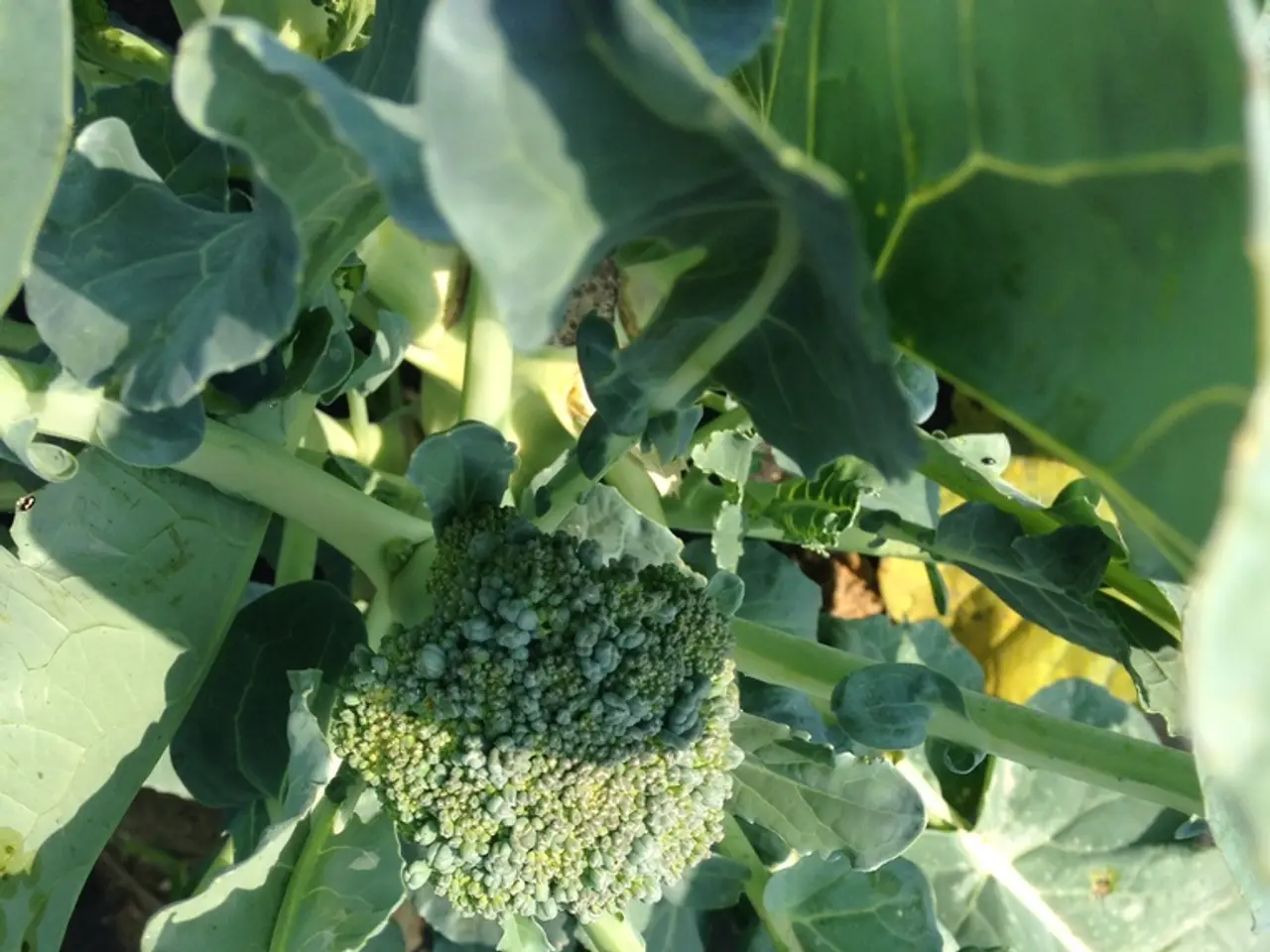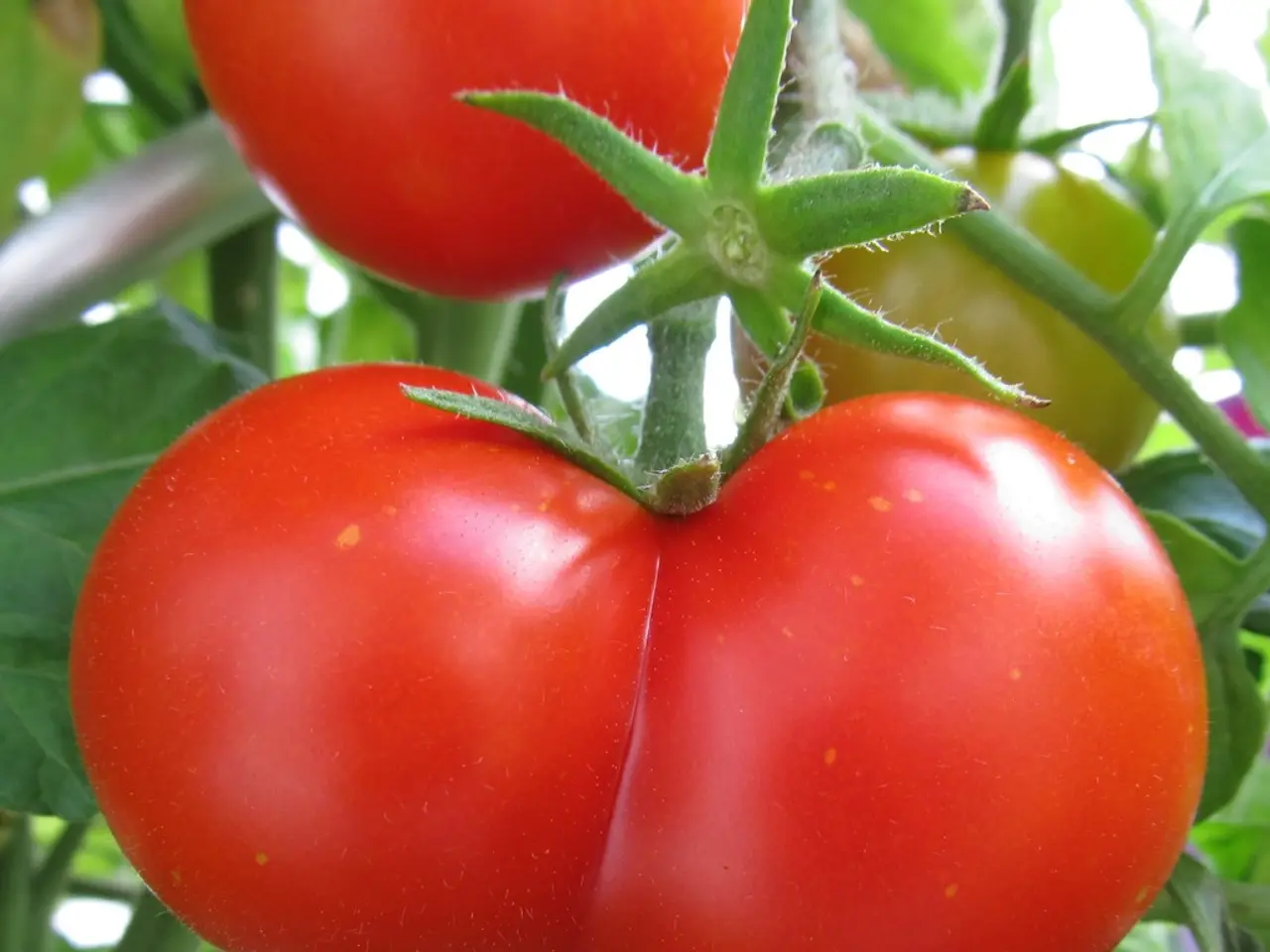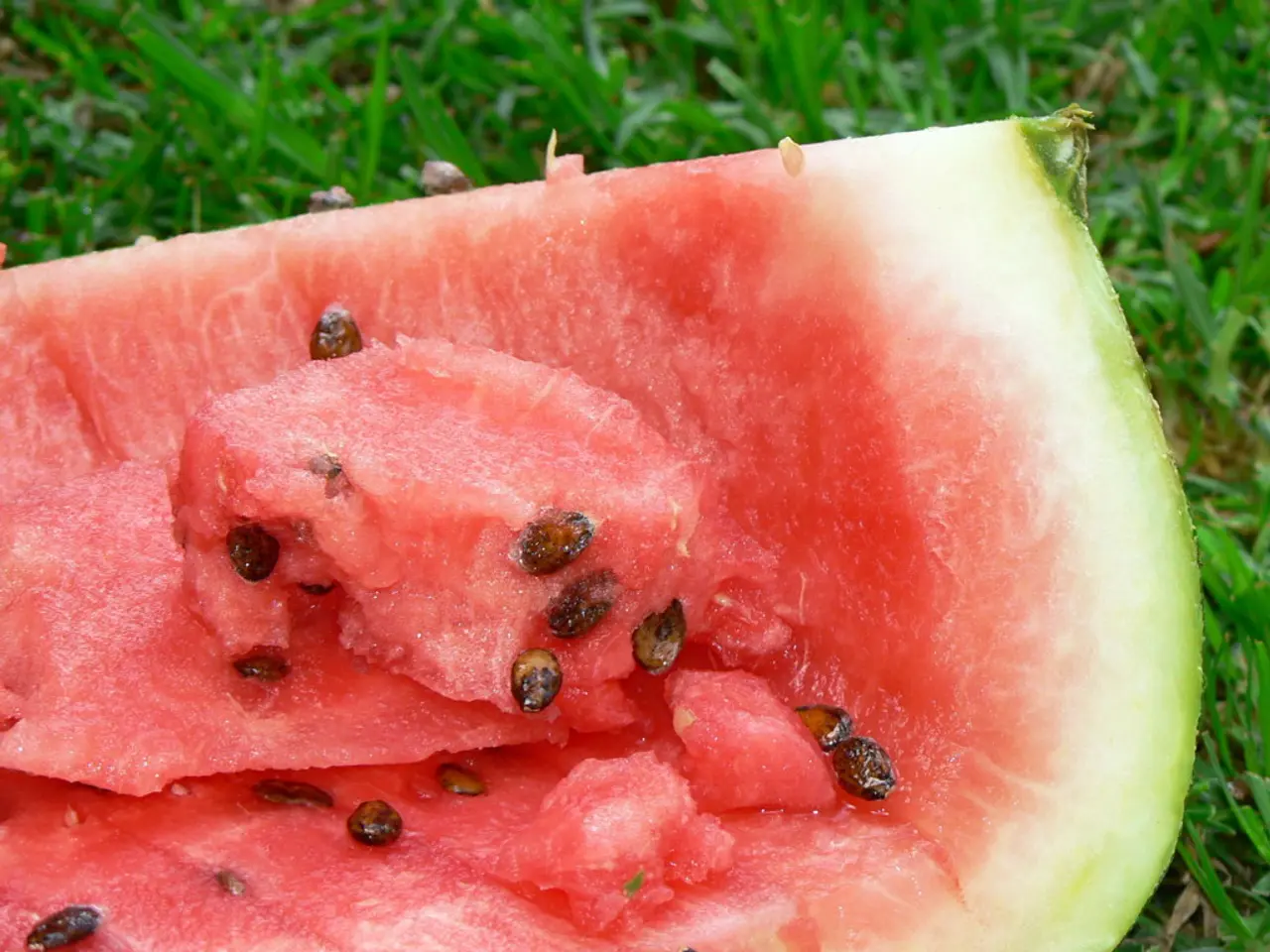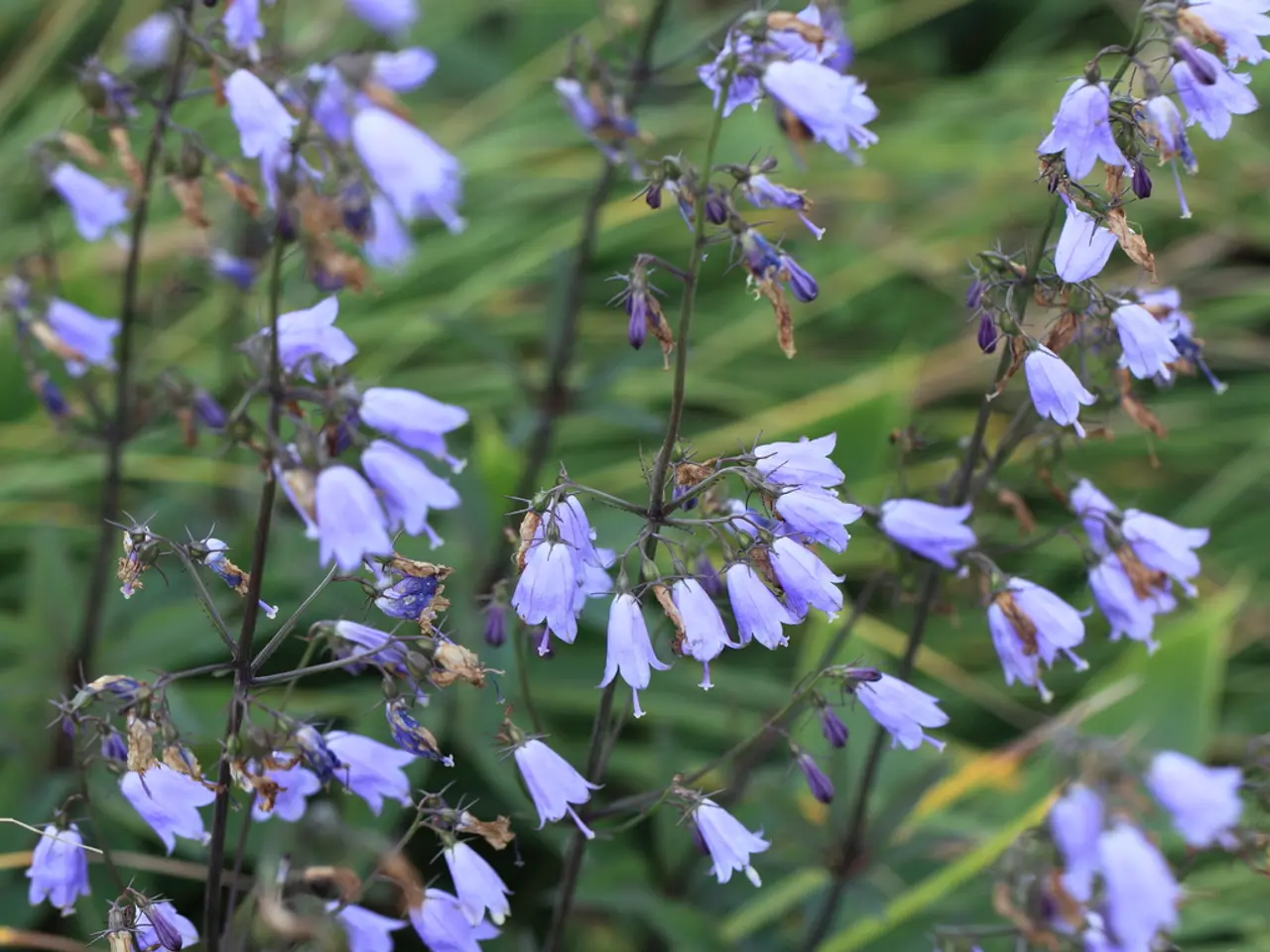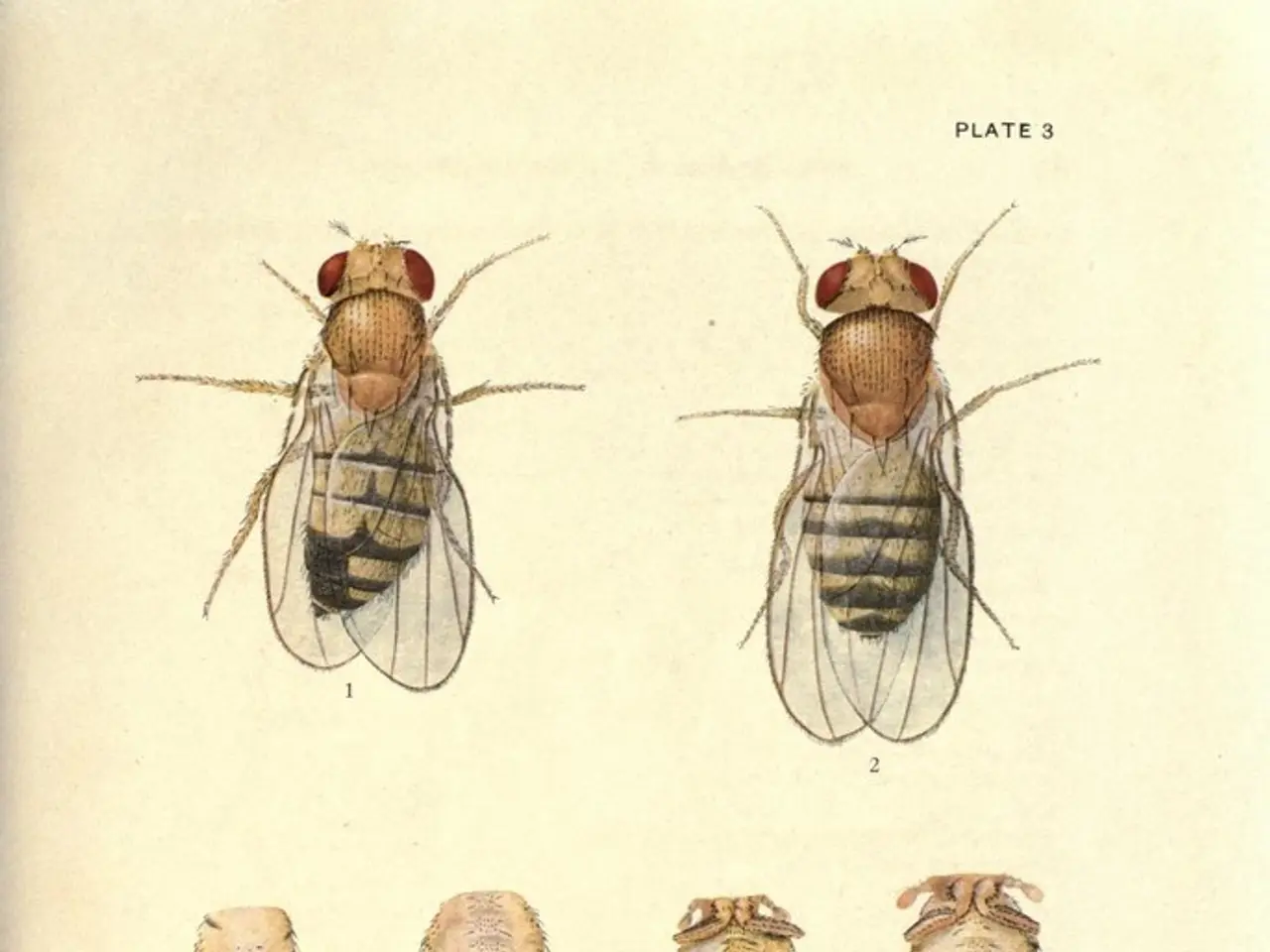Guidelines for Cultivating Broccoli from Seed to Harvest
** Broccoli for Zone 5: The Complete Grow Guide**
Want a tasty broccoli harvest in Zone 5? You're in the right place! Here's your comprehensive guide on growing broccoli from start to finish.
Growing Broccoli for Zones 5 Spring and Fall
Broccoli is a cool-weather crop ideal for Zones 5 that requires careful planting timings for a successful harvest. It can be grown twice a year with the right placement, ensuring you'll enjoy fresh broccoli all year long.
Spring Broccoli
To grow spring broccoli for a summer harvest, start your seeds indoors 7-9 weeks before the last spring frost. This means you'll be planting around March 15 (give or take a few days). Plant them about 1/4" to 1/2" deep and water thoroughly. Use a grow light for the best results, and keep it on your seedlings for 14-16 hours a day to prevent leggy growth.
Transplant your seedlings outdoors about 2 weeks before the last frost date (around May 1 here, generally), after hardening them off for about 4 days. The seedlings should have at least 2 sets of true leaves at this point.
Fall Broccoli
Growing broccoli in your fall garden can be very rewarding. Generally, the weather is more predictable, and you'll have fewer small heads due to cold temperatures or early flowering caused by extreme heat.
Start seeds indoors in late summer, 15 to 17 weeks before your first expected frost. Plant them the same way you would with a spring crop, keeping them between 50 and 70 degrees for optimal growth.
Transplant your seedlings outside about 10 to 12 weeks before your first expected frost. The plants will mature and withstand the cooler autumn temperatures, giving you a great fall harvest.
If your seedlings are leggy, don't worry! They can be planted up to their first set of leaves when transplanted to create stronger roots.
Where to Plant Broccoli
Broccoli thrives in full sun, though it can tolerate partial shade, especially for spring crops. It prefers well-draining, compost-rich soil with a slightly acidic pH level around 6.0 and 7.0.
Add plenty of organic matter to the soil before planting—a good layer of well-aged compost mixed into the site provides the nutrients your broccoli needs. Space your transplants about 12" apart and bury them at a depth slightly deeper than their container.
Companion Planting
Broccoli will yield the best flavor when it's planted near celery, onions, garlic, and potatoes. It will also do well with radishes, bush beans, and beets.
To repel insects, interplant fragrant herbs like chamomile, tansy, oregano, and mint. Flowers that do well with broccoli are nasturtiums, cosmos, and marigolds, which also help repel some common pests from your broccoli and other cole crops.
Broccoli gets along well with almost everything in the garden, but avoid planting it near other brassicas. Brassica family members include broccoli, brussels sprouts, cabbage, collard greens, kale, and kohlrabi.
Broccoli also fails to thrive when planted near tomatoes, pole beans, sweet corn, strawberries, squash, and watermelon.
Care of Broccoli
Provide about 1.5" to 2" of water per week to broccoli. Water your plants deeply and mulch around them for weed and disease control and to help keep the soil cool and moist.
Broccoli is a heavy feeder, so supplement its nutrients with fish emulsion or a balanced organic granular fertilizer every 3 weeks after transplanting. Avoid adding fertilizer directly to the plants or getting it on their stalks.
Avoid overwatering broccoli, as excessive moisture can lead to disease problems. If mother nature doesn't provide enough rainwater, water the plants slowly and deeply, focusing the water at the base of the plant and not on the leaves to prevent fungal diseases.
Common Pests and Diseases
Broccoli is susceptible to a few pests and common diseases, especially fungal diseases. Proper crop rotation, maintaining good spacing, and keeping a close eye on your plants can help prevent many problems.
- Aphids: If leaves are curling, you may have aphids attacking your plants. Create soapy water with dish soap and apply it to the leaves to combat aphids.
- Cutworms: Cutworms can cut young seedlings off at ground level. Plant sturdy transplants to help prevent this problem, or use seedling collars until they mature.
- Cabbage worms: These worms are the larvae of cabbage butterflies. Treat with Bt to control the problem early on.
- Downy mildew: This fungal infection is often caused by a wet growing season and lack of airflow. Prevent it by not overwatering plants and maintaining good airflow between them. Remove diseased leaves and spray with neem oil.
- Clubroot Disease: This disease will result in wilting leaves and requires immediate removal of the entire plant, roots and all. To combat the issue, raise your soil pH to 7.2, and make sure your soil pH is at least 6.0 before planting your broccoli to prevent it.
Harvesting Broccoli
Start checking your broccoli every day when you begin seeing a head forming in the center. Most broccoli heads will be between 4" and 7" when ready to harvest, but this can vary depending on the growing climate and season. Harvest the head when the outside florets are about the size of a match head.
The ideal buds should be tightly closed, and the color should be a deep green. If you start seeing even a hint of yellow, harvest the broccoli head immediately. Simply take a sharp knife and cut the broccoli head stem about 5 inches below the head, and remove it with a quick cut.
After the main head is harvested, side shoots will often grow off of the broccoli. Look for the same signs as you did for the main head to know when they're ready to harvest. Simply harvest the side heads the same way you did the main head.
Storing Broccoli
Broccoli does not keep long once harvested, so it's best to eat it fresh. Store it in the refrigerator and use it within 3 days. Do not store broccoli tightly covered, as it can promote spoilage.
Broccoli can be easily blanched and frozen. Once prepared, store it in a tightly sealed container in the freezer for up to one year.
Heirloom Broccoli Varieties to Consider Growing
Consider growing heirloom varieties of broccoli for their unique flavors and colors. Some popular choices include:
- Calabrese: Known for its delicious Italian taste and prolific side harvests after the main head is harvested.
- Dicicco: Another Italian variety that produces medium heads at different rates of maturity, great for staggered harvests.
- Purple sprouting: An incredibly cold-hardy variety that produces multiple, small purple-colored heads instead of one large main head.
With proper planting, growth, and harvesting techniques, you can enjoy a bountiful and beautiful broccoli harvest in Zone 5. Remember to time your planting and give your broccoli the care it needs—and you'll soon be enjoying your own fresh, homegrown broccoli!
Resources:
[1] https://www.almanac.com/plant/broccoli[2] https://extension.umn.edu/crops-fruit/broccoli/[3] https://www.epicgardening.com/vegetable/broccoli/[4] https://www.gardeningknowhow.com/edible/vegetables/broccoli/how-to-grow-broccoli.htm
Heirloom Broccoli Varieties:
CalabreseDiciccoPurple Sprouting
To complement your broccoli crop and enhance your lifestyle, consider engaging in home-and-garden activities, such as gardening. Growing other plants like celery, onions, garlic, potatoes, radishes, bush beans, and beets around your broccoli will bring out the best flavors in your broccoli. Additionally, interplanting fragrant herbs like chamomile, tansy, oregano, and mint, and flowers like nasturtiums, cosmos, and marigolds will help repel pests and add beauty to your garden. Remember to avoid planting broccoli near other brassicas, tomatoes, pole beans, sweet corn, strawberries, squash, and watermelon for optimal growth.
